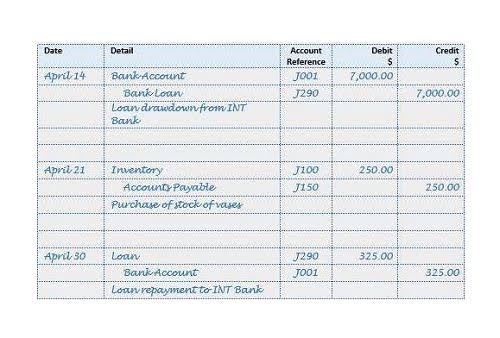
An example of deferred revenue is a retainer fee charged by law firms. When a legal practice charges a new client a $10,000 retainer fee, it isn’t immediately recorded as revenue in its books. It records it as deferred revenue first, and only records $10,000 in revenue after the entire retainer fee has been earned.

Different Methods Under GAAP
A company should clearly disclose unearned revenue within its financial statements, typically as a part of the balance sheet. It is usually listed under the current liabilities section, as it represents obligations that are expected to be settled within one year. Clear disclosure helps ensure transparency and accurate financial reporting for investors and other stakeholders. Unearned rent revenue is a liability account, in which its normal balance is on the credit side.
A few practical things to know about deferred revenue
In this case, the company can make the journal entry with the debit of the unearned rent revenue account and the credit of the rent revenue account. The nature of unearned rent is a liability which the company owes to its client or customer in providing the rent. Likewise, recording the unearned rent as revenue will result of the overstatement of revenue on the income statement and the understatement of liabilities on the balance sheet.

How confident are you in your long term financial plan?
- This decreases your unearned revenue liability because you performed the service.
- This type of revenue is recorded as a liability because the company owes the delivery of goods or services to its customers.
- The present value is related to the idea of the time value of money.
- Deferred revenues refer to money received for goods or services to be provided to customers later, whereas deferred expenses refer to money expended for obligations not yet observed.
- When the goods and services are supplied/rendered, the liability is transitioned into revenue on the income of the organization.
To stay compliant, entities must record unearned revenue as a liability on the balance sheet. This is done because the company has received payment for a product or service which has not yet been delivered or performed. is unearned revenue a current liabilities The liability is reduced as the company fulfills its obligations, and the revenue is recognized in the income statement. Unearned revenue is usually disclosed as a current liability on a company’s balance sheet.
James pays Beeker’s Mystery Boxes $40 per box for a six-month subscription totalling $240. Unearned revenue and deferred revenue are the same things, as are deferred income and unpaid income. These are are all various ways of referring to unearned revenue in accounting.
- To determine when you should recognize revenue, the Financial Accounting Standards Board (FASB) and International Accounting Standards Board (IASB) presented and brought into force ASC 606.
- This is because the revenue received ends up on the income statement, and the cash is on the balance sheet of the organization’s financial reports.
- In some industries, the unearned revenue comprises a large portion of total current liabilities of the entity.
- So, recording unearned income as a liability also fulfills the legal obligation of the business.
- Over time, when the product or service is delivered, the deferred revenue account is debited and the money is credited to revenue.
Unearned revenue plays a pivotal role in cash management since it provides the organization with an inflow of cash that can be used for many activities. Some of the examples include prepaid rents, insurance, airline tickets, and annual software subscriptions. Also, if cash is expected to be tight within the next year, the company might miss its dividend payment or at least not increase its dividend. Dividends are cash payments from companies to their shareholders as a reward for investing in their stock. Since you haven’t delivered on all the website support throughout the year yet, you should classify the support fee separately in your contract, and only recognize that revenue as you earn it.
- Also referred to as deferred revenue, unearned revenue is considered as a form of prepayment, where the purchaser pays for a product or service before actually receiving it.
- This method assumes a twelve-month denominator in the calculation, which means that we are using the calculation method based on a 360-day year.
- Current liabilities are obligations that must be paid within one year or the normal operating cycle, whichever is longer, while non-current liabilities are those obligations due in more than one year.
- Due to the revenue recognition process, cash flow and income are not inherently linked.
- They are under liabilities until the services or goods are delivered.
- A client purchases a package of 20 person training sessions for $2000, or $100 per session.
What Deferred Revenue Is in Accounting, and Why It’s a Liability
Current liabilities, therefore, are shown at the amount of the future principal payment. Accrued revenue is a common form of income for most conventional businesses. Most businesses provide upfront work or goods before invoicing their clients.
An open credit line is a borrowingagreement for an amount of money, supplies, or inventory. Theoption to borrow from the lender can be exercised at any timewithin the agreed time period. When using financial information prepared by accountants,decision-makers rely on ethical accounting practices. For example,investors and creditors look to the current liabilities to assistin calculating a company’s annual burnrate. The burn rate is the metric defining the monthly andannual cash needs of a company.
- The annual interest rate is 3%, and you are required to make scheduled payments each month in the amount of $400.
- Smart Dashboards by Baremetrics makes it easy to collect and visualize all of your sales data so that you always know how much cash you have on hand, which clients have paid, and who you still owe services to.
- Scheduling these entries will organize and automate deferred revenue recognition.
- When revenue is recorded in the general ledger, there is a certain way to do it.
- This will direct the money out of the account and recognize it as revenue.
- Income taxes are required to be withheld from an employee’ssalary for payment to a federal, state, or local authority (hencethey are known as withholdingtaxes).
The $4 sales tax is a current liability until distributedwithin the company’s operating period to the government authoritycollecting sales tax. The adjusting entry for unearned revenue will depend upon the original journal entry, whether it was recorded using the liability method or income method. For example, assume that each time a shoe store sells a $50 pair of shoes, it will charge the customer a sales tax of 8% of the sales price.
Why Is Deferred Revenue Treated As a Liability?
The order in which current liabilities are presented on the balance sheet is a management decision. When preparing a balance sheet, liabilities are classified as either current or long-term. Accrual accounting and GAAP rules state that a business must record a revenue transaction as and when it occurs rather than when it is completed or cash is received.
